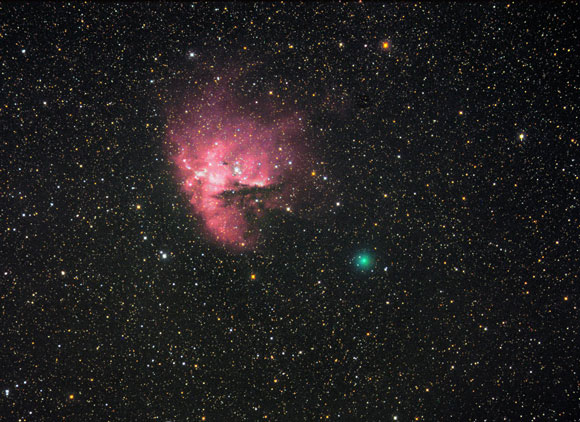Space scientist from L.A.
He lives near the coast of the Pacific Ocean, but prefers long walks across up-country. Since he watched a solar eclipse as a child, astronomy became his daily bread. Small solar system objects attracted him, no matter what kind they were. He hunts for them everywhere it is possible. He crosses remote deserts searching for meteorites, checks imagery from multiple spacecraft for sungrazing comets, searches for dangerous asteroids in archival images, and tracks artificial satellites. Jack of many astronomy trades and master of all, Rob D. Matson.
You are a person with many differrent interests, a lot of them are connected to astronomy. In spite of that, you are not working as an astronomer. Have you ever wanted to be a professional astronomer?
I briefly considered a career in astronomy, but when I was going to school (1980s) the prospects for a well-paying astronomy job were not so good. So, I chose optical engineering instead, which, of course, is intimately tied to astronomy.
And so it is your full-time job, what is it exactly?
The simplest label would be "space scientist", though this isn't very helpful since it covers a lot of ground. Most of what I do involves simulation and modeling of the behavior and performance of space-based sensors, the phenomenologies that these sensors observe (e.g. space backgrounds, earth backgrounds), and the environmental conditions under which they operate e.g. solar/cosmic radiation. I also design signal processing algorithms to exploit the capabilities/limitations of each sensor in order to maximize performance.
Astronomy is your lifelong hobby. What got it all started?"
From childhood, I've always been fascinated by the night sky, and in particular the ability to predict events in advance. The earliest astronomical event I can recall that had a big influence on me was the July 10, 1972, solar eclipse which was total in Nova Scotia, Canada. I was 9 years old at the time, living in northern Virginia, and while I did not travel to Nova Scotia to see totality, it was a rather deep partial eclipse as seen from my house.
Afterward, I became very interested in figuring out how to predict future eclipses (as well as past ones). The math was too much for me at that young age, but within a few years I had learned enough to make rudimentary predictions that would accurately predict the dates of all solar (and lunar) eclipses in the 20th century, just not the locations.
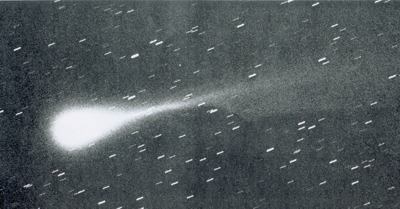
Another memorable event happened a year and a half later while vacationing in central Florida. My parents woke me before dawn so that we could drive out to a dark location and try to see Comet Kohoutek. I couldn't have told you the month this happened, let alone the day, except for an extraordinary coincidence. The comet was pretty disappointing, but on the drive back to the house at sunrise, I noticed a "bite" out of the sun! My family members were afraid to look directly at it, but since it was so low on the horizon, I felt it was safe to steal brief glances at it, and I was absolutely sure a solar eclipse was underway. My parents countered that if an eclipse was going to happen, there would have been something about it in the news the day before, so they were skeptical of my sighting. I made a pinhole projection card when we got back to the house to prove it to them, by which time the eclipse was even more pronounced. Vindication! The date: Christmas Eve day, 1973.
You could not travel to see the total solar eclipse in 1972 as you were only 9 then. Next year you watched another one, although it was not knowingly and willfully. Later when you were able to predict forthcoming eclipses, you were very anxious to see the next one. How was your first planned trip to see the solar eclipse?
My first deliberate solar eclipse journey was to Mazatlan, Mexico on July 11th, 1991, for the very long totality event (6 minutes 53 seconds). As totality approached, cloud cover increased, threatening to ruin the view. I could see "blue holes" to my south, so I scrambled to find a taxi to take me to a more favorable spot. That "eclipse chasing" maneuver was quite nerve-wracking, and I vowed never again to be dependent on someone else for last minute transportation. I did end up seeing totality, but much of the time the view was spoiled by intermittent clouds. A shame that I'll never see a longer eclipse. Despite the fast pace of medical advances, I don't hold out hope of living another 121 years for the June 13, 2132 event!
Just six months later, I saw my next total eclipse (this one annular) for which I didn't have to travel at all: From Laguna Beach, CA, I watched the sun set as a bagel over the Pacific Ocean, just to the left of Catalina Island.
You definitely became an eclipse chaser. How was it with the last solar eclipse in 20th century?
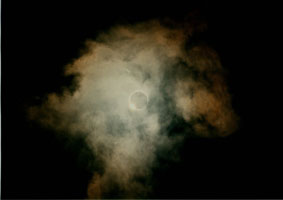 My girlfriend (now wife) and I planned a European vacation around that eclipse. We flew into Zurich a week ahead of time, and then drove all over central Europe visiting Switzerland, northern Italy, Liechtenstein and Austria. We spent the night before the eclipse in Vienna, keeping a close eye on the weather forecast for August 11. That morning, we headed south and were not happy with the cloud cover in Austria. Since the southwest was definitely not looking good, we headed southeast toward Eisenstadt, paralleled the border with Hungary a bit and eventually crossed into Hungary at Koszeg.
My girlfriend (now wife) and I planned a European vacation around that eclipse. We flew into Zurich a week ahead of time, and then drove all over central Europe visiting Switzerland, northern Italy, Liechtenstein and Austria. We spent the night before the eclipse in Vienna, keeping a close eye on the weather forecast for August 11. That morning, we headed south and were not happy with the cloud cover in Austria. Since the southwest was definitely not looking good, we headed southeast toward Eisenstadt, paralleled the border with Hungary a bit and eventually crossed into Hungary at Koszeg.
Just five miles to our west it was clouded over (and creeping our way!), but we were on the edge of blue skies southeast of Koszeg. With only 20 minutes before totality, we pulled off onto a country road and out into a farmer's vineyard. I set up my camera and tripod, and then we opened the wine we brought for the occasion. We were very lucky: we had a little haziness, but nothing that really detracted from the spectacle. Having that car was the only reason we saw anything!
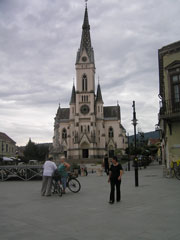
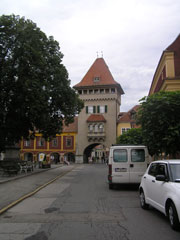
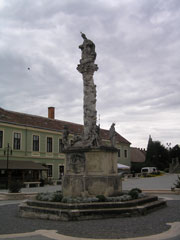 Foto: S.Kürti
Foto: S.KürtiAt August summer nights we can watch falling stars, to see a fireball is not so common, but more exciting. Much more adventurous is a search for remnants of space wanderers. And that was the next field you got involved with. How did you become interested in meteorites?
My first exposure to meteorites was at the Smithsonian as a child. I don't think I was particularly interested in them at the time, perhaps because their meteorite display wasn't nearly as nice then as it is today. Even into adulthood, I didn't give meteorites much thought as I considered them so rare as to be unattainable.
But then something remarkable happened -- my wife's mother showed me not just one meteorite, but half a dozen one afternoon visit in the spring of 1999. I was shocked! I simply never imagined that you could ~buy~ meteorites -- at least not without spending a fortune. I wasn't even sure it was LEGAL to own them, given their rarity and scientific value. But here was evidence right before my eyes that not only could you own them, that they were reasonably affordable. Not two weeks later, I was holding my first two, very own meteorites which I purchased from Mike Farmer (a well-known meteorite hunter and dealer). I was hooked!
I continued to purchase specimens from various dealers, as well as books about meteorites. After a few months, I got the crazy notion that if other people were finding meteorites, why not me? After all, I live in a desert, and a little research revealed that more than a dozen small meteorites had been found (over the course of decades) on a single dry lakebed less than two hours from my house!
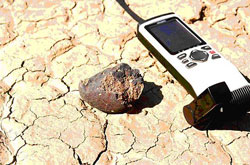
So on September 11, 1999 (a date which is unfortunately now easy to remember) I packed up my car with supplies and drove to Lucerne Valley, inspired by papers and articles I found online by Ron Hartman, Bob Verish and others. I only spent three hours there that day, finding a variety of little black magnetic rocks (none of which turned out to be meteorites). But I was not discouraged; in fact, to my surprise I found I really enjoyed spending time in the desert. It was quiet, peaceful, and wonderfully desolate - a pleasant contrast to the urban sprawl of greater Los Angeles.
Unfortunately, my next seven trips to various desert locations had similar negative results. But eventually on trip #9 in May 2000, I had success: a very nice L4 ordinary chondrite. Adding up my total search time for all my prior desert trips, that first find represented 40 hours of walking, or about 100 miles!
Fortunately, later finds came much easier, and in the decade since that first discovery I've recovered over 100 meteorites from California, Nevada, Arizona and Texas.
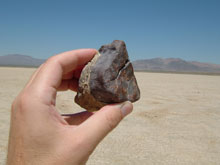


Many space rocks encounter our Earth, some of them even hit it. All-sky cameras around the world are quite often recording these events. Last year in February a bright bolide exploded over Central Europe. Due to the succesful pro-am collaboration of astronomers from Hungary, Czech Republic and Slovakia it was recovered, now known as a meteorite Košice. Fireballs over USA are common events, have you ever tried to track down any of them? 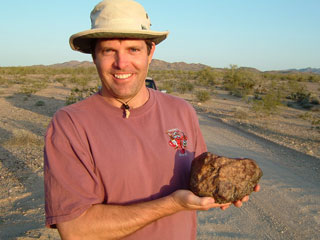
Indeed I have! For whatever reason, there has been a noticeable increase in the number of observed fireballs worldwide over the last several years. Some of this is simply due to greater public awareness, but much of the increase is due to improved technology: all-sky fireball networks in Europe, Canada, Australia, Japan and the U.S. In fact, it has reached the point where so many fireballs are recorded that it is no longer possible for me to analyze every one. So I concentrate on the bright ones in the U.S. and Canada, particularly those that produce sonic booms and that were observed by two or more all-sky cameras (thus allowing triangulation of the 3D path). The 3D track can allow you to determine the pre-earth- encounter orbit of the meteoroid, as well as predict the likely impact zone for any meteorites that survive.
In addition to all-sky cameras, one can utilize seismic/acoustic networks to triangulate fireballs -- particularly those that produce terminal bursts. I have done this for a number of fireball events in California and the Pacific Northwest where there are large numbers of acoustic sensors. Unfortunately, each of the falls that have been detected by these sensors so far has been in an area highly unfavorable for meteorite recovery (e.g. dense forests, mountainous areas, open ocean).
But there is another new tool in the bolide-chasing arsenal that has been fabulously successful over the last several years: NEXRAD Doppler radar. (Unfortunately, NEXRAD is currently available only in the U.S., the portions of southernmost Canada that are within range of U.S. radars, Guam, Puerto Rico and South Korea.) The first time I used it was for the West, Texas fall in February 2009. The fall was recorded by two radars in dramatic fashion, and dozens of meteorites were quickly recovered directly under those radar returns. This was my first successful meteorite recovery trip to a fresh fall location!
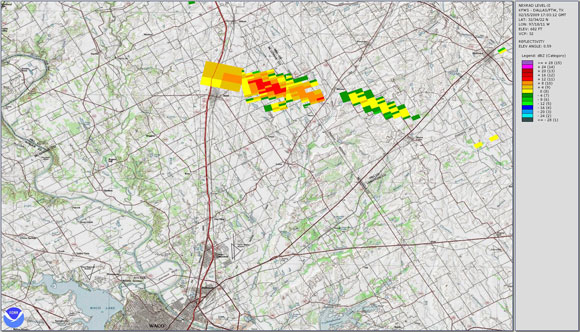 click to enlarge
click to enlarge
Since that West, Texas (aka "Ash Creek") pathfinder fall, I have used Doppler radar to lead to successful meteorite recovery in Grimsby, Ontario (25 September 2009) and Mifflin, Wisconsin (14 April 2010). The Mifflin fall produced the most dramatic radar returns so far recorded. The Lorton, VA, fall on 18 January 2010 also shows up on Doppler radar, but no additional stones have been found beyond the one that crashed through a doctor's office.
Since NEXRAD data is archived back to the 1990s, I spent quite a bit of time retroactively searching for famous U.S. (and southern Canadian) falls. Of 14 falls within range of radar since 1997, 9 of them showed up on one or more radars: clearly a valuable tool! I have also searched for radar returns for a large number of bolide events for which meteorites have not yet been recovered. Recognizing meteors in NEXRAD data is a bit of a black art -- much like finding SOHO comets or dim asteroids in NEAT archive data. So far, there are only a handful of people that know how to do it.
Comet Kohoutek in that memorable Christmas Eve in 1973 did not attract you, however sungrazing comets captured your attention many years later. How did you learn about SOHO comets and when did this evolve into discoveries?
I don't recall how I first came across SOHO -- may have been due to my amateur satellite tracking activities. But I started looking for comets in July 2001. For those first 10 months, I had no problem ~finding~ comets; the trouble was that I was always a little bit slower than another veteran comet hunter (e.g. Mike Oates, Maik Meyer, Sebastian Hoenig, Rainer Kracht, XingMing Zhou, etc.) This motivated me to build better comet hunting tools and reporting procedures, and I finally made my first discovery May 15th, 2002.
Since then you search images from SOHO and the pair of STEREO spacecraft. Up to now you have discovered 105 comets, which also include 3 SWAN discoveries and another 3 STEREO comets. Your name is connected with finding one of the milestone comets - you spotted 1500th SOHO comet on 2008 June 25. Have you ever thought that you could find such a memorable comet during your routine search?
I have to admit it was a case of pure luck; I hadn't been keeping track of how close we were to SOHO-1500, and in any case those days I was too busy to check SOHO daily. Sometimes a month or two passes between my checks of SOHO activity.
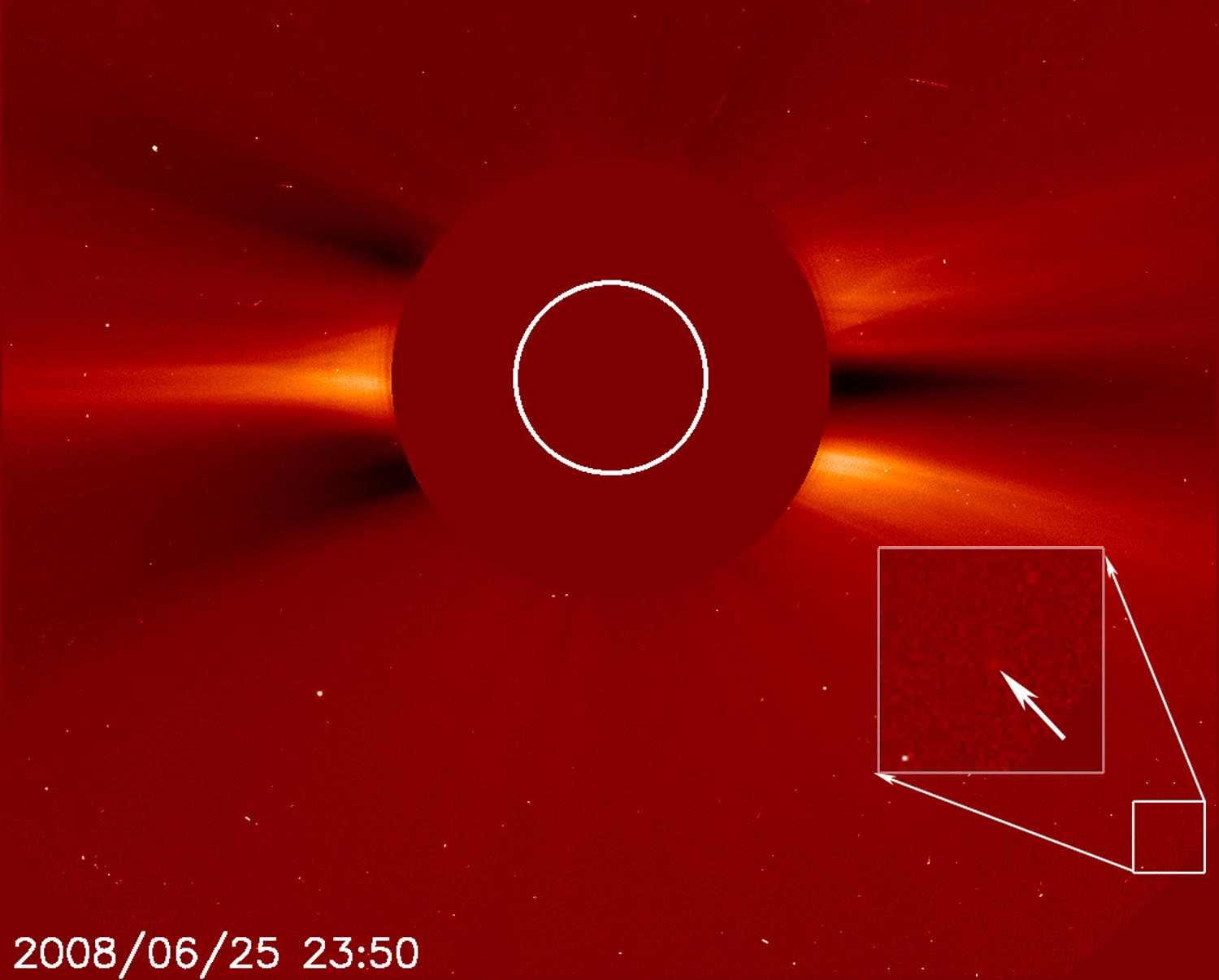
Soon after you had started your comet hunt, you discovered another hunting possibility: the search for asteroids in SkyMorph's archives.
I can thank Sebastian Hoenig for that. In January 2003, he told me about his foray into asteroid hunting using SkyMorph and archived images by NEAT. I started working with it a month later, with a great deal of assistance from Sebastian.
What was the reason to start your hunt in the archive?
Similar to Sebastian's: I wanted a greater challenge than finding comets in SOHO imagery, with the added incentive that I would get official credit for my discoveries as well as the opportunity to name them.
Several devoted amateur hunters were able to discover hundreds of new asteroids from NEAT imagery those days. But then Minor Planet Center (MPC) changed their discovery credit rules. So after more than a thousand discoveries you abandoned the main belt asteroid quest in favor of Near Earth Asteroid (NEA) work. What is your most highly esteemed result from SkyMorph work?
Yes, I redirected my SkyMorph efforts toward NEA and comet pre-recoveries (usually shortened to "precoveries"). This work is more scientifically useful, and much more difficult than MBA discovery, so it was a natural next step. For the last seven years, I have made an effort to be a significant contributor to NEA precoveries, and in that time have been responsible for a little over half of all NEA precoveries. So I would say that my most important personal result does not involve a particular celestial object, but rather the totality of my NEO precoveries. I have precovered 116 NEA (#100 came last year), and have contributed NEA astrometry on nearly 300 near-earth asteroids."
How are you able to share your different searching interests with your daily duties in your job ?
I cannot deny that all of these "hobbies" consume a considerable amount of time, and work is always my number one priority (since the hobbies don't pay the bills!). It simply is not possible to keep up with all of my astronomy interests simultaneously, so I work them in phases. Whenever there is a big bolide event, it takes top priority; when things are quiet on the meteor front, I spend more time on comets (SOHO, SWAN, STEREO) and asteroids (discovery, precovery, mass determination).
The Solar Wind Anisotropies (SWAN) instrument aboard of SOHO spacecraft was designed to observe emissions of hydrogen around the Sun at ultraviolet wavelenghts. Fortunately comets can reveal itself by such an emissions too. From this point it is on perseverance of the hunter when he spot a new comet this way. Up to date there are only 9 SWAN comets discoveries. And you were succesful three times. You could not see any of SOHO comets from Earth. On the other side, your second SWAN discovery C/2006 M4 was visible with small telescopes, and after outburst in late October 2006 became even a naked eye target. How did you feel watching that dirty snowball from your backyard?
Like a proud father! I had no hope of personally observing any of my SOHO sungrazing discoveries, so C/2006 M4 was a unique experience. Sure, my heart races a bit each time I discover a comet in data from SOHO, STEREO, or especially SWAN. But it's an entirely different sensation from walking outside and seeing your comet "live" through binoculars.
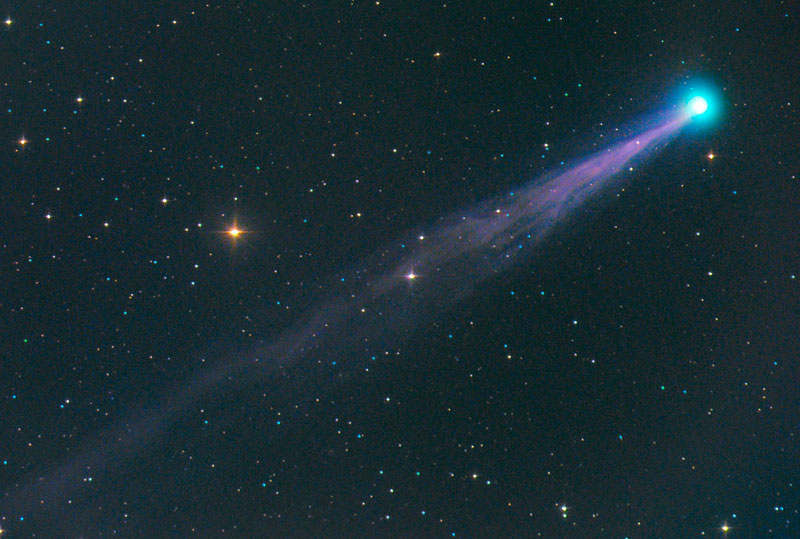
Do you take yourself as an "internet astronomer", observer astronomer or both?
Lately, both. For the last two years I have been submitting occasional observing jobs to robotic telescopes operated by the Sierra Stars Observatory Network (SSON). This continues the learning curve trend from SOHO - NEAT discovery - NEAT precovery - personal telescopic discovery. With SSON, I've discovered 32 asteroids, though it has become extremely difficult to make any additional discoveries due to the success of the space-based WISE sensor.
Can you name any astronomer which inspired you in your astronomy work?
Previously I mentioned Sebastian; some additional astronomers who have been heroes or inspirations to me are Brian Marsden, Neil deGrasse Tyson and Jean Meeus.
Do you have a favourite astronomy-related quote?
I have several:
"In questions of science, the authority of a thousand is not worth the humble reasoning of a single individual." Galileo Galilei
"The church says the earth is flat, but I know that it is round, for I have seen the shadow on the moon, and I have more faith in a shadow than in the church." Ferdinand Magellan
"Space is big. You just won't believe how vastly, hugely, mind- bogglingly big it is. I mean, you may think it's a long way down the road to the chemist's, but that's just peanuts to space." Douglas Adams in "The Hitchhiker's Guide to the Galaxy"
What is your favourite astronomy book?
I have so many! In terms of practical application, and how often I've referenced a particular book, Jean Meeus's "Astronomical Forumulae for Calculators" would have to be near the top. Richard O. Norton's "Rocks from Space" also deserves mention.
On your discovery list there are SOHO, SWAN and STEREO comets, asteroids and you have also found more than 100 meteorites. Is there anything still left from your discovery list?
Well, at the top of my list would have to be the discovery of an achondritic meteorite, especially a lunar or Martian meteorite. No lunar meteorite has ever been found in North America, so that would be quite a trophy. On the astronomy front, the top item on my wish list is a NEO. You might think after discovering hundreds of asteroids that by sheer dumb luck I would have stumbled across at least one NEO by now. But so far it hasn't happened. Similarly, I have yet to discover a Trans-Neptunian Object, though again not for lack of trying. At this point a TNO discovery is very unlikely since the big surveys have already found all the brighter ones, but I still hold out hope for a NEO.
You said of SOHO comets "There's not a lot of great science coming out of us simply finding these small comets," and added: "But there is still the thrill of the hunt." Which discovery brought you the greatest thrill so far?
I would have to say my first meteorite find (Silver Dry Lake 001). As exciting as it is to discover a SWAN comet, there is no substitute for being able to hold your discovery in your own hands and know that you are the first human to touch a 4.5-billion-year-old object.
And what could be an even greater thrill?
A supernova discovery would be quite exciting. But I can't think of a discovery that would be more thrilling than a lunar or Martian meteorite. Except, perhaps finding a Mars meteorite with a fossil inside. ;-)
